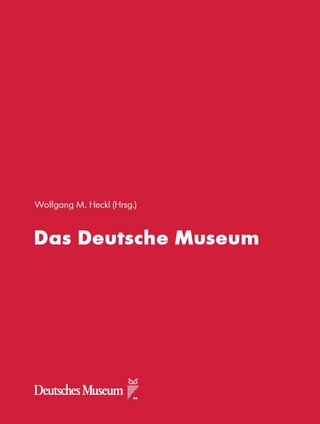
Digital Collections
Seiten
1998
Butterworth-Heinemann Ltd (Verlag)
978-0-7506-3456-4 (ISBN)
Butterworth-Heinemann Ltd (Verlag)
978-0-7506-3456-4 (ISBN)
Shows how museums and other cultural organizations fit into the world of information and electronic communications and, most importantly, how they can take advantage of what it has to offer. This book explains how sound, video and animations can be digitized and developed as a central resource that can be drawn on for many varied access routes.
Suzanne Keene's pioneering book shows how museums and other cultural organizations fit into the new world of information and electronic communications and, most importantly, how they can take advantage of what it has to offer.
By using new technology museums can build knowledge bases around information about collections. A collection object can be the central link for information about past and present, places, people and concepts, technologies, ways of working and evidence of the natural world. 'Digital Collections' explains how this vision can be realized. Sound, video and animations can be digitized and developed as a central resource that can be drawn on for many varied access routes: via the World Wide Web; CD ROMs; through on-gallery screens, and other future products still in development.
These technological capabilities raise many compelling issues that need to be understood in order to successfully develop information collections. In this book Suzanne Keene reviews these issues clearly and comprehensively. Her accompanying Click-Through Guide provides the latest news and links to Internet information:
http://www.users.dircon.co.uk/~s-keene/infoage/infoage.htm
Suzanne Keene is a senior manager of museum collections and information at the Science Museum, London. She led the UK LASSI project to select a collections information system for UK museums. This, with her experience in directing information technology and multimedia projects, means that she is accustomed to translating the highly technical concepts of information technology into high level issues for senior and strategic management.
Suzanne Keene's pioneering book shows how museums and other cultural organizations fit into the new world of information and electronic communications and, most importantly, how they can take advantage of what it has to offer.
By using new technology museums can build knowledge bases around information about collections. A collection object can be the central link for information about past and present, places, people and concepts, technologies, ways of working and evidence of the natural world. 'Digital Collections' explains how this vision can be realized. Sound, video and animations can be digitized and developed as a central resource that can be drawn on for many varied access routes: via the World Wide Web; CD ROMs; through on-gallery screens, and other future products still in development.
These technological capabilities raise many compelling issues that need to be understood in order to successfully develop information collections. In this book Suzanne Keene reviews these issues clearly and comprehensively. Her accompanying Click-Through Guide provides the latest news and links to Internet information:
http://www.users.dircon.co.uk/~s-keene/infoage/infoage.htm
Suzanne Keene is a senior manager of museum collections and information at the Science Museum, London. She led the UK LASSI project to select a collections information system for UK museums. This, with her experience in directing information technology and multimedia projects, means that she is accustomed to translating the highly technical concepts of information technology into high level issues for senior and strategic management.
Suzanne Keene was Head of Collections Management, Science Museum, London until becoming an independent consultant and lecturer.
What's happening?; Electronic opportunities; Museum collections functions digitized; Building the digital collection; Standards and choice; Making multimedia: a whirlwind tour; Let's hear it from our users: design and evaluation; Digits and people; The wide, wide world; A crystal ball. Appendix. Explanations. Sources and further reading. Index.
| Erscheint lt. Verlag | 20.2.1998 |
|---|---|
| Verlagsort | Oxford |
| Sprache | englisch |
| Maße | 156 x 234 mm |
| Gewicht | 300 g |
| Themenwelt | Kunst / Musik / Theater |
| Geisteswissenschaften ► Geschichte ► Hilfswissenschaften | |
| Mathematik / Informatik ► Informatik | |
| ISBN-10 | 0-7506-3456-1 / 0750634561 |
| ISBN-13 | 978-0-7506-3456-4 / 9780750634564 |
| Zustand | Neuware |
| Haben Sie eine Frage zum Produkt? |
Mehr entdecken
aus dem Bereich
aus dem Bereich
Anforderungen an das digitalisierte Kulturerbe
Buch | Softcover (2023)
transcript (Verlag)
29,00 €
Buch | Hardcover (2024)
Wallstein Verlag
38,00 €


